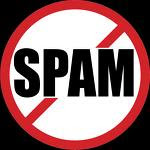
A diamond is the hardest natural substance on earth, but if it is placed in an oven and the temperature is raised to about 763 degrees Celsius (1405 degrees Fahrenheit), it will simply vanish, without even ash remaining. Only a little carbon dioxide will have been released.
Diamonds are formed over a period of a billion or more years deep within earth's crust - about 150km (90 miles) deep - and is pushed to the surface by volcanoes. Most diamonds are found in volcanic rock, called Kimberlite, or in the sea after having been carried away by rivers when they were pushed to the surface.
A diamond is 58 times harder than the next hardest mineral on earth, corundum, from which rubies and sapphires are formed. It was only during the 15th century that it was discovered that the only way to cut diamonds was with other diamonds. Yet, diamonds are brittle. If you hit one hard with a hammer, it will shatter.
The largest diamond
The world's largest diamond was the Cullinan, found in South Africa in 1905. It weighed 3,106.75 carats uncut. It was cut into the Great Star of Africa, weighing 530.2 carats, the Lesser Star of Africa, which weighs 317.40 carats, and 104 other diamonds of nearly flawless colour and clarity. They now form part of the British crown jewels.
The Cullinan was three times the size of the next largest diamond, the Excelsior, which was also found in South Africa. The world's largest documented polished diamond - unearthed in 1986, also in South Africa - is called Unnamed Brown. It weighs 545 carats and was cut down from a 700 carat rough diamond. It took an international team of expert cutters 3 years to complete the masterpiece. Another impressive diamond that also took 3 years to cut, and also is part of the British crown jewels, is the Centenary Diamond. It weighs 273.85 carats and is the world's largest flawless diamond.
Not all diamonds are white. Impurities lend diamonds a shade of blue, red, orange, yellow, green and even black. A green diamond is the rarest. It is not the rarest gemstone, however. That title goes to a pure red ruby. Diamonds actually are found in fair abundance; thousands are mined every year. 80% of them are not suitable for jewellery - they are used in industry. Only diamonds of higher clarity are sourced to the jewellery stores.
Synthetic diamonds
Late in the 19th century, Scottish scientist James Ballantyne mixed lithium with bone oil and paraffin, sealed it in iron tubes and heated it to red hot. He claimed the resultant stones were diamonds. They were stored away and only many years later they were found to be diamonds, although synthetic.




No comments:
Post a Comment